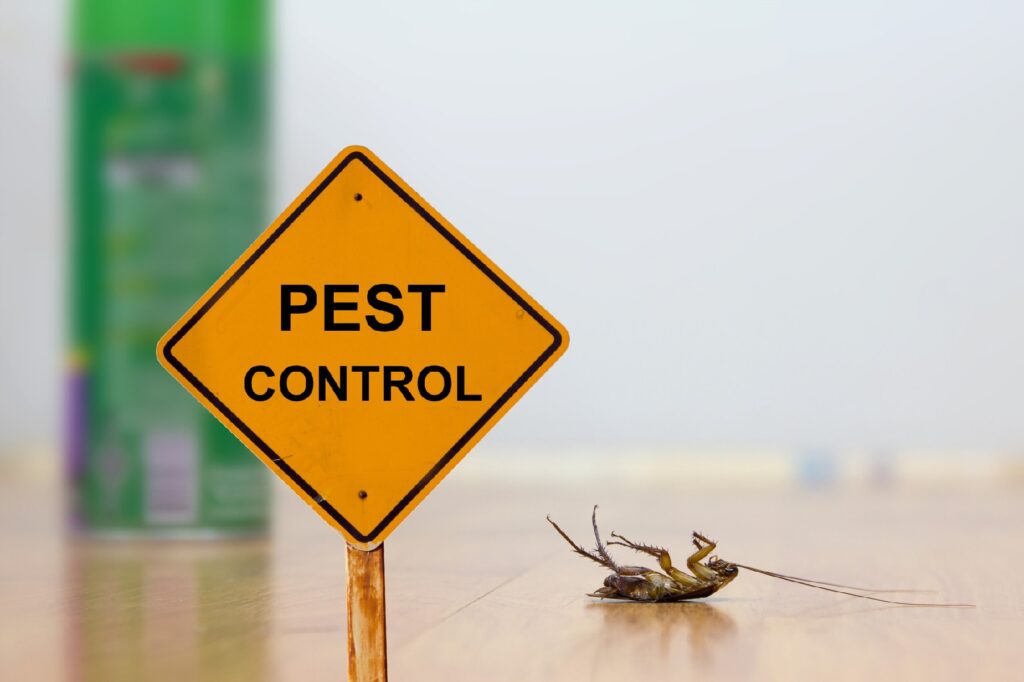Trusted A1 Exterminator Charlotte NC - Comprehensive Pest Solutions
Trusted A1 Exterminator Charlotte NC - Comprehensive Pest Solutions
Blog Article
Bed Pest Treatment Breakdown: Comparing Chemical Vs. Non-Chemical Solutions
In the world of parasite control, especially when managing the relentless issue of bed insects, the choice in between chemical and non-chemical treatment remedies can be an essential one. Both methods offer distinct advantages and drawbacks, influencing variables such as performance, security considerations, and total cost. By taking a look at the nuanced information of each technique, a clearer understanding of which path to pursue in addressing a bed pest invasion can be achieved.
Effectiveness of Chemical Therapies
Chemical therapies for bed bug problems have actually been commonly recognized for their powerful and rapid effectiveness in eradicating these parasites. When considering the efficiency of chemical treatments, it is essential to understand that they can give a quick and comprehensive remedy to a bed pest problem.
In addition, chemical therapies have the benefit of providing residual impacts, indicating that they can continue to get rid of bed bugs even after the preliminary application. This residual action is especially helpful in combating any type of possible re-infestations. Furthermore, the rapid action of chemical therapies can bring relief to people dealing with severe bed pest invasions, enabling them to reclaim control of their space promptly.
Security Concerns With Chemical Solutions
One important element that needs careful consideration when making use of chemical remedies for bed insect therapy is ensuring the safety and security of owners and the environment. Direct exposure to specific chemicals made use of in bed insect treatments can lead to respiratory system issues, skin inflammation, or other adverse responses, particularly in people with pre-existing problems or sensitivities.
In addition, the environmental influence of chemical services is another considerable factor to consider. Some pesticides utilized in bed insect therapies may be unsafe to useful pests, wild animals, and communities if they leach into the dirt or water supply. It is crucial to use chemical treatments judiciously, following security standards, and thinking about much less hazardous alternatives to mitigate these risks and guarantee the effective and risk-free monitoring of bed pest infestations.
Advantages of Non-Chemical Strategies
Taking into consideration the possible security concerns and environmental influence linked with chemical services for bed insect treatment, exploring non-chemical techniques provides an encouraging choice with numerous unique benefits. Non-chemical therapies are eco friendly, as they do not contribute to air or water contamination, making them a lasting option for pest control.
Furthermore, non-chemical options can be efficient in targeting bed insects, including hard-to-reach areas where chemical therapies may not pass through. Approaches such as warm treatment, vacuuming, heavy steam cleaning, and cushion encasements provide detailed obliteration without the usage of damaging chemicals. Moreover, non-chemical methods can be less disruptive, requiring minimal prep work and allowing for quicker reentry into dealt with areas. On the whole, choosing non-chemical bed bug therapy techniques not only prioritizes safety and ecological defense yet also makes certain reliable and thorough insect control.
Limitations of Non-Chemical Treatments

In addition, non-chemical therapies frequently call for several applications to achieve effective removal. This can be time-consuming and might not constantly guarantee complete elimination of all bed insects and their eggs, specifically in hard-to-reach or hidden locations.
In addition, the success of non-chemical treatments heavily counts on correct implementation and thoroughness, which can be testing for people without professional proficiency. Poor application of non-chemical approaches might cause insufficient elimination, causing relentless problems and the demand for extra treatments.
As a result, while non-chemical therapies have their benefits, it is important to acknowledge these constraints and consider them when identifying one of the most effective technique for taking care of bed pest problems.
Expense Comparison: Chemical Vs. Non-Chemical Options
Offered the limitations related to non-chemical therapies, a necessary facet to assess in the context of bed bug administration is the expense comparison in my site between chemical and non-chemical choices. Chemical treatments commonly involve the application of insecticides by specialists, which can range from $250 to $900 per room, depending upon the intensity of the problem and the size of the area to be treated. In comparison, non-chemical treatments like heat therapy or steam can be much more expensive, with costs ranging from $1,000 to $6,000 for an entire home. While the preliminary cost of chemical therapies might seem reduced, several treatments may be needed to fully remove the invasion, potentially raising the general cost. On the other hand, non-chemical options may supply a much more lasting and environment-friendly remedy, although they can be cost-prohibitive for some people. Eventually, when thinking about the expense of bed bug treatment options, it is essential to consider the in advance costs against the performance and lasting sustainability of the picked technique.
Final Thought

Thinking about the possible safety and security worries and environmental influence linked with chemical services for bed pest treatment, exploring non-chemical approaches presents an encouraging option with numerous unique advantages.Offered the constraints linked with non-chemical treatments, a crucial aspect to assess in the context of bed pest management is the official statement price comparison in between chemical and non-chemical alternatives. In contrast, non-chemical treatments like warm treatment or heavy steam can be a lot more pest solution services expensive, with prices ranging from $1,000 to $6,000 for a whole home. While the preliminary cost of chemical treatments may seem reduced, several treatments might be called for to totally eliminate the problem, potentially enhancing the overall expense.In final thought, when contrasting chemical and non-chemical bed insect therapy options, it is necessary to take into consideration efficiency, safety, advantages, restrictions, and cost.
Report this page